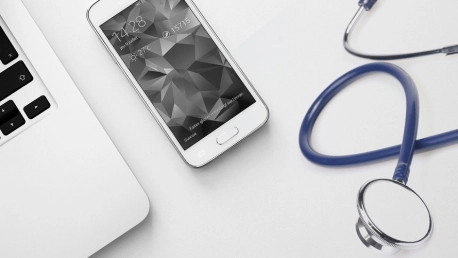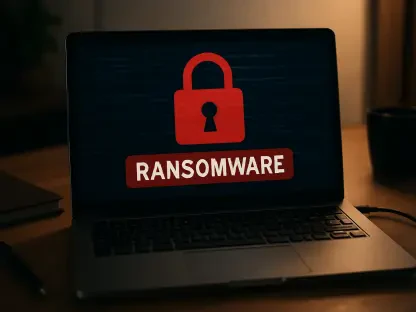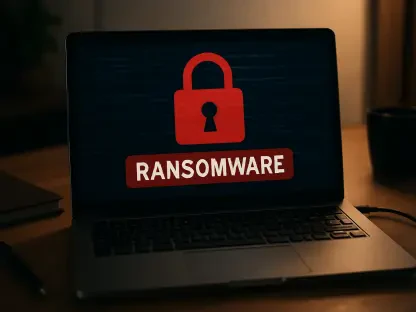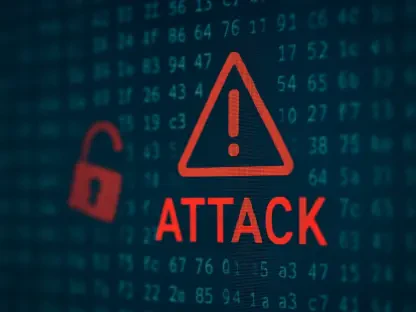Healthcare cybersecurity is a significant concern for organizations in the industry due to regulations like HIPAA, HITECH Act, and PHI. In 2022, Check Point Research counted 1463 cyberattacks on a weekly average. That is a 74% increase from 2021. US healthcare alone reports 1410 security breaches per week, an 86% increase since 2021.
What makes matters this dire is that cybercriminals use AI to supercharge their attacks. They no longer have to code and launch their malware manually. With a surplus of AI-powered tools, automating threats and targeting victims is easy.
2024 Healthcare Cybersecurity Challenges
Statistics show alarming numbers, with ransomware attacks alone accounting for a 278% increase in all cyber threats. Confidential patient data is a lucrative target for hackers, and electronic medical records (EMRs) have made them more accessible. What has been convenient for patients on one side has become a cybersecurity nightmare on the other. Moreover, the healthcare sector isn’t vulnerable only to data hijackers. Each of the following six healthcare cyber threats poses a significant security concern in 2024:
Ransomware Attacks:
Ransomware acts as malicious software that encrypts data and hijacks it from the vulnerable target, allowing the hacker to demand payment for its release. Data breaches in the healthcare industry alone have cost the US nearly 11 million USD from March 2022 to March 2023, according to Statista. Also, the consequences of these viruses, worms, and Trojans breaching security are not momentary.
- Losing sensitive patient information causes long-term financial damage by disrupting vital patient care. But beware, paying ransom does not ensure data recovery.
- In fact, the Federal Bureau of Investigation (FBI) encourages against paying blackmail money. Here is what the FBI advises to avoid ransomware.
- Although paying ransoms is legal in the US, according to FAFT standards, it could violate anti-money laundering (AML) and know-your-customer (KYC) regulations in some jurisdictions.
Phishing Attacks:
Phishing is a fraudulent attempt to gather personal or sensitive information by portraying a trustworthy party. It is also a leading cause of healthcare data breaches. In February 2015, Anthem Inc. suffered the largest phishing attack in healthcare history, jeopardizing 78.8 million member records. Sometimes, healthcare professionals disclose sensitive data or download phishing malware unwillingly.
[Understanding the Difference Between Spam, Scams, and Phishing]
Insider Threats:
An insider threat means employees or contractors of a healthcare organization compromise access to sensitive assets or information, willingly or accidentally. There are various insider threats, each with different motivations, from negligence to malice. Some employees could act out revenge or even receive blackmail from third parties.
While companies often invest a lot of money to mitigate malicious intent, statistics show that negligent insider threats are more common, according to Ponemon’s 2020 Insider Threats Report, amounting to a prevalence of 61%.
On any given day in 2023, 500 or more records encountered an average of 1.99 healthcare data breaches. In total, 364,571 healthcare records were compromised every day. Most of these cyber attacks were possible because of human error. Due to employee transgression or snooping, these data theft situations lead to fraud and tremendous financial losses. Medical data is precious on the black market, so be mindful of the risks of unauthorized disclosure of patient information.
DDoS Attacks:
Distributed Denial of Service attacks flood the system with traffic, obstructing patient care. Cybercriminals usually target outdated or legacy systems with DDoS. Staff falls for email bates containing malware attachments, which wreak havoc in weak network services. This set of tactics hinders the ability of health workers to deliver effective care.
IoT Vulnerabilities:
IoT exists in various areas within healthcare, including supply chain management, remote patient monitoring, hospital environmental control, telemedicine, robotics, interconnected ambulances for emergencies, and more. Unsurprisingly, 53% of connected devices face the risk of an IoT attack. Cybercriminals disclose protected health information by targeting susceptible data such as demographics and financial information. Legacy equipment only deepens the issue, as outdated devices are especially vulnerable to intrusions. Hospital IoT devices often lack necessary updates and protocols, making them highly vulnerable to DDoS attacks and medjacking.
Social Engineering Attacks:
Even though AI is one of the most practical weapons for hackers, it is not all-powerful and doesn’t give them an all-access pass. It only automates their previously established tactics, so cybercriminals still have to do some footwork. One of the fastest ways to enter a locked database is by social engineering – a malicious way of hijacking data because it depends on the manipulation or deception of employees.
Some of the methods hackers use to approach vulnerable employees:
- Social media scams: In 2022, cyberbullies targeted physicians via direct messages (DMs), portraying legitimate law enforcement agencies. They threatened medical professionals with license revocation and home raids if they didn’t comply with their demands.
- Scam phone calls: If you receive a sudden call about an urgent problem with your Medicare card, be wary. That is not the official communication channel for Medicare. Instead, you would receive a letter from the Social Security Administration (SSA) to address the issue and set up a phone call. Criminals value your Medicare number, so be careful.
- Email: Hackers love to bait victims with money or rewards. Like phishing, you might receive an email containing a tempting monetary promise, but it always includes a malicious link, or you need to enter personal data into a website, etc.
- In-person: As mentioned above, scammers might use manipulative, deceptive, and downright blackmail tactics to get you to give up sensitive information.
- Third-party trackers: A recent Health Affairs study detected that 99% of US hospitals use third-party tracking on their websites, which violates HIPAA regulations. Third-party trackers monitor website traffic but, at the same time, expose patients to targeted ads. Third-party breaches put vulnerable individuals at risk through advertisements for fraudulent health products, leading to potential harm.
2024 Healthcare Cybersecurity Solutions
Combating the dangers in cyberspace is a constant battle. Without reliable security partners, it will continue to be an uphill battle. Also, raising awareness among employees can be expensive and time-consuming, Something medical professionals don’t have. In March 2023, President Biden issued the National Cybersecurity Manual to help institutions realize their pain points and find solutions.
Also, you can rely on the framework the Department of Health and Human Services published to try to combat cyber threats in 2024. In addition to these comprehensive guides, here are eight proactive strategies to help you confront cyber threats in 2024 head-on:
Make Sure You Are in Compliance:
Even after you decide to invest in effective cyber threat countermeasures, you cannot implement them willy-nilly. They need to follow specific healthcare regulations. However, understanding the distinction between cybersecurity regulations and US healthcare frameworks takes time and effort. Your best action would be to rely on a cybersecurity professional to help you adhere to these guidelines to improve your security maturity. This step will help you quickly identify your Achilles heal.
Regular Security Assessments:
Conduct quarterly cybersecurity assessments to determine weaknesses of digital systems, networks, and applications. A proactive approach towards penetration testing will help prevent fraud and theft of healthcare data.
Employee Training and Awareness:
Nurture a culture of cybersecurity awareness among your employees. Regularly provide them with support and cybersecurity training. Educate people on common cyber threat vectors, phishing methods, and best actions when faced with suspicious activities.
Add Strict Access Controls:
Strict access controls and least-privilege principles should be mandatory at all levels of the organization. Network segmentation also helps with this. All healthcare databases should request a two-step authentication from individuals to access sensitive data and systems.
Create an Incident Response Plan:
In the eventuality of a cyber threat, you should have an incident response plan. But before any attack happens, consider adopting a cyber crisis simulation system. A simulation will help prepare your personnel to respond to real cyberattacks. Spending time and resources to develop a robust incident response plan will not be money wasted. In 2024, it is no longer a question of whether you will be attacked but when. An excellent cyber threat simulation has clear steps to contain, investigate, and recover from the attack.
Keep Software Up-to-date:
Regularly update all software. That will make it harder for cyberbullies to target your IoT devices and steal data. All up-to-date systems should also have backup storage and the latest security measures, including an antivirus, data classification and encryption, and cloud security.
Learn Through Collaboration:
You can always rely on peers, experts, agencies, and competitors to learn something new about digital security. Sharing info on emerging threats, best practices, and solutions helps all parties. Constant research on best cyber protection practices ensures providing care is always timely, even in the face of an imminent threat.
Continuous Monitoring and Improvement:
Remember, the security system you set up to date will be stale news in less than six months. Put your digital security as the second-highest priority under exceptional medical care. While establishing the latest security measures is excellent, your PHI is still vulnerable without a monitoring system. A reliable monitoring tool will detect and respond to threats in real-time. Furthermore, you should always continue reviewing and upgrading your cybersecurity protocols by learning about emerging threats and industry trends.
What Makes Cybersecurity in Healthcare Challenging?
Protecting sensitive patient information and critical systems in the healthcare industry is complex due to several factors. A cybersecurity breach risks patient health and safety and compromises digital patient records. These factors have long-bearing consequences and could potentially destroy people’s trust in the healthcare system.
Healthcare institutions are especially susceptible to cyberattacks because of their compartmentalized structure, outdated IT equipment, and multiple entry points in the system. Most importantly, there is zero tolerance for downtime in a hospital. A ransomware attack endangers lives by delaying life-saving procedures and forcing the institution to negotiate, again damaging it financially and reputationally.
Furthermore, the ever-changing tactics of attackers create a complex threat for healthcare workers who prioritize patient care but need more expertise in IT security. That is why they need reliable security partners to protect data and prevent cyber threats









